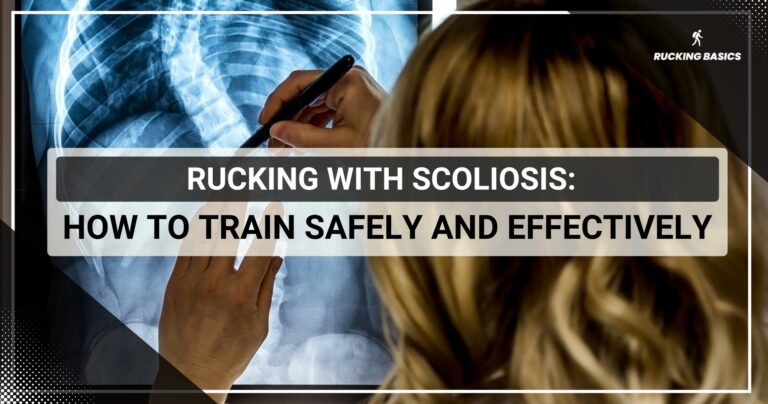Rucking is a form of exercise used by special forces, including the Air Force, that combines walking with the added challenge of a weighted backpack. It has drastically surged in popularity among fitness enthusiasts. Rucking offers a comprehensive workout that improves endurance, strength, and cardiovascular fitness.
However, as with any physical activity, rucking comes with its own set of potential injuries that can sideline participants if proper precautions aren’t taken. Recognizing and preventing these injuries is crucial to maintain progress and avoid setbacks in your fitness journey.
In this article, you will learn:
- The most common injuries associated with rucking and their prevention strategies.
- Insights into selecting the right gear to minimize injury risks.
- Effective practices to enhance your rucking experience safely.
As we delve into the specifics of rucking injuries and how to avoid them, you’ll gain valuable knowledge to help you enjoy the benefits of rucking without the pain and setbacks of avoidable injuries.
How to Prevent Most Common Rucking Injuries with the Right Rucking Gear and Exercises
Below are the most common rucking injuries and effective prevention strategies to enjoy a pain-free rucking experience.
Blisters
Blisters, a common overuse injury in sports like rucking and rugby, are small pockets of fluid that form on the skin due to friction, often occurring on the feet from the constant rubbing against shoes or socks. They can be painful and hinder your rucking progress.
How to prevent blisters when rucking?
To prevent blisters, ensure your footwear fits properly without being too tight or too loose. Opt for moisture-wicking socks to keep your feet dry and reduce friction. Applying blister-preventive tapes or plasters on known hotspots before starting your ruck can also be effective.
Metatarsalgia
Metatarsalgia is a condition characterized by pain and inflammation in the ball of the foot, commonly experienced by ruckers. It’s often caused by prolonged walking with heavy weights, leading to excessive pressure on the forefoot.
How to prevent metatarsalgia when rucking?
Choose shoes with ample cushioning and support, especially in the forefoot area, to distribute weight more evenly. Incorporating foot-strengthening exercises and using metatarsal pads can also alleviate pressure and prevent the onset of metatarsalgia.
Plantar Fasciitis
Plantar fasciitis involves inflammation of the plantar fascia, a thick band of tissue that runs across the bottom of your foot. Rucking and plantar fasciitis is triggered by excessive strain due to carrying heavy loads over long distances without adequate foot support.
How to prevent plantar fasciitis when rucking?
To avoid plantar fasciitis, wear shoes with proper arch support and cushioning. Gradually increase the weight you carry to allow your body to adapt and incorporate stretching exercises for your calves and plantar fascia into your routine.
Stress Fracture
A stress fracture is a small crack in a bone, frequently occurring in the feet or lower legs of ruckers. It results from overuse and repetitive force, often exacerbated by carrying heavy weights over long distances.
One of the studies found that a ruck march led to increased peak impact force and loading rate in Army ROTC cadets, which are risk factors for bone stress injuries, despite no significant perceived fatigue [1].
How to prevent stress fracture when rucking?
Prevent stress fractures by gradually increasing your rucking distance and weight, allowing your bones to adapt to the stress. Ensure you’re getting adequate calcium and vitamin D for better bone density, and choose footwear that provides sufficient cushioning and support.
Shin Splints
Shin splints, similar to a common rugby injury, describe pain along the inner edge of the shinbone and are common among ruckers. They’re caused by overuse, improper footwear, or carrying too much weight, leading to inflammation of the muscles, tendons, and bone tissue.
How to prevent shin splints when rucking?
Wear shoes with good shock absorption and arch support to minimize the impact on your shins. Strengthen your dorsal and plantar flexors through different foot exercises, and increase your rucking intensity gradually to avoid overloading your shins.
Lower Back Pain
Lower back pain in ruckers often results from carrying heavy weights without proper form, leading to strain and discomfort in the lower back muscles.
How do you prevent lower back pain when rucking?
Focus on strengthening your core muscles (primarily abs and glutes) to support your lower back better. Ensure your ruck is packed correctly, with the weight evenly distributed and close to your body. Practice proper lifting and carrying techniques to minimize strain.
Understanding the importance of rucking posture can make all the difference in avoiding back pain and maximizing the benefits of your rucking routine.
Core strength is key here and if you’re looking to improve your core stability and reduce back pain, check out this guide on building rucking abs. It provides practical strategies for engaging your core during rucking, ensuring better posture and reduced strain on your back.

Hip Bursitis
Hip bursitis is inflammation of the bursa near the hip joint caused by repetitive motion and pressure from carrying a heavy ruck. It leads to pain and discomfort around the hip area.
How to prevent hip bursitis when rucking?
Prevent hip bursitis by wearing a waist belt to distribute the ruck’s weight away from your shoulders and hips. Incorporate hip-strengthening and flexibility exercises into your training regimen.
Patellofemoral Pain Syndrome (Runner’s Knee)
Patellofemoral pain syndrome, or runner’s knee, is characterized by pain around the kneecap. In ruckers, it’s often caused by the downhill segments of rucking, putting extra stress on the knees.
How to prevent patellofemoral pain syndrome when rucking?
Strengthen your quadriceps and hamstrings to support your knees better. Also, strengthen your adductors and gluteus medius since they are responsible for stabilization in the frontal plane of motion. Ensure your footwear provides adequate cushioning, and be mindful of your form, especially when navigating downhill terrain.
Achilles Tendinitis
Achilles tendinitis is inflammation of the Achilles tendon, the band of tissue connecting calf muscles to the heel bone. It’s common in ruckers due to overuse or sudden increase in the intensity or duration of their activities.
How to prevent Achilles tendinitis when rucking?
Gradually increase the intensity of your rucking to give your body time to adapt. Incorporate calf and Achilles tendon stretches into your warm-up and cool-down routines, and wear shoes that support and cushion your heel.
Shoulder Impingement
Shoulder impingement occurs when the shoulder blade exerts pressure on the rotator cuff, a common injury for ruckers due to the weight of the backpack pulling on the shoulders and upper back.
How to prevent shoulder impingement when rucking?
To prevent shoulder impingement, adjust your backpack straps so the weight sits evenly across both shoulders. Strengthening exercises for the shoulders and upper back can also improve posture and reduce the risk of impingement.

Wrapping Up
Rucking, blending the challenge of weighted backpacks with the simplicity of walking and maintaining an optimal stride length, offers a unique path to fitness. Yet, it’s not without its risks.
I created this guide with the aim of arming you with the knowledge to sidestep the common pitfalls of rucking, covering everything from blisters to Achilles tendinitis by emphasizing proper gear, technique, and preparatory measures.
Whether you are a young or more senior rucking enthusiast, by integrating these strategies into your routine, you’re set to enjoy all the benefits of rucking, ensuring your fitness journey progresses with minimal risk of injuries. Remember, the key to rucking success lies in mindful preparation and listening to your body, allowing you to push your limits safely and sustainably.
Frequently Asked Questions About Rucking Injuries
How do you prevent injury when rucking?
To prevent injury when rucking, choose appropriate footwear, gradually increase weight and distance, and incorporate strength training and stretching into your routine, following best practices in sports medicine. These strategies help to condition the body and reduce injury risk.
Does rucking cause injury?
Rucking can cause injury if not done properly, especially without proper preparation, excessive weight, or inadequate footwear. To minimize risk, it’s essential to focus on proper technique, gradual progression, and appropriate gear.
What Is the number one rucking injury?
The number 1 rucking injury is plantar fasciitis, resulting from repetitive stress and inadequate support to the foot’s arch during long-distance rucking with heavy weights. Preventive measures include using supportive footwear and gradually increasing the rucking load.
Is it ok to ruck everyday?
Rucking every day can lead to overuse injuries due to insufficient recovery time for the muscles and joints. It is beneficial to alternate rucking with rest days or lower-impact exercises to allow the body to recover.
How often is it safe to ruck?
It is safe to ruck 2-3 times a week, allowing ample time for recovery between sessions. Balancing rucking with rest and cross-training activities helps prevent overuse injuries and promotes overall fitness.
How do I return to rucking after an injury
To return to rucking post injury, it’s crucial to start gradually, focusing on low weight and short distances, and to consult with a healthcare professional to tailor a safe comeback plan.
References:
- Earl-Boehm JE, Poel DN, Zalewski K, Ebersole KT. The effects of military style ruck marching on lower extremity loading and muscular, physiological and perceived exertion in ROTC cadets. Ergonomics. 2020;63(5):629-638. doi:10.1080/00140139.2020.1745900








